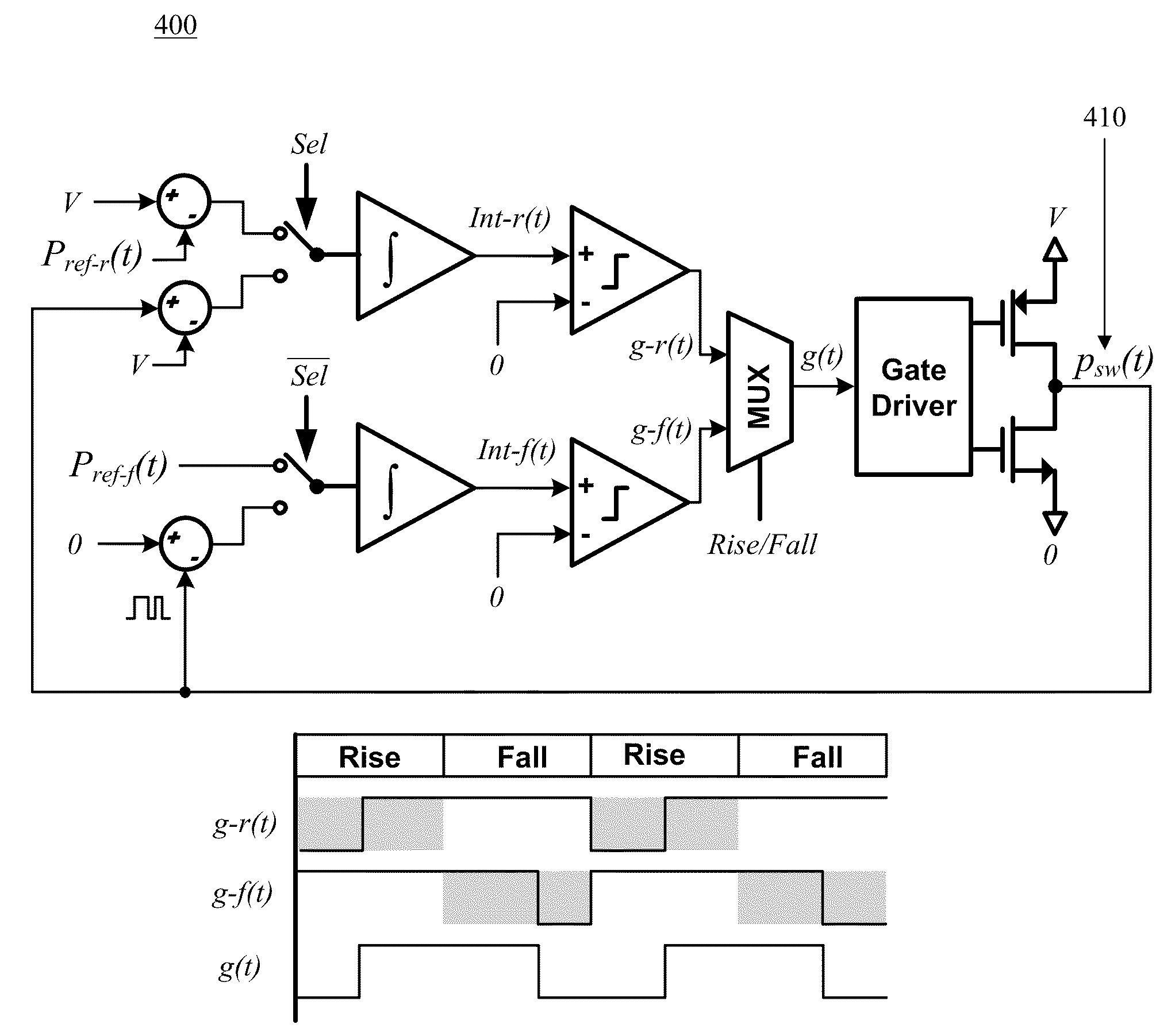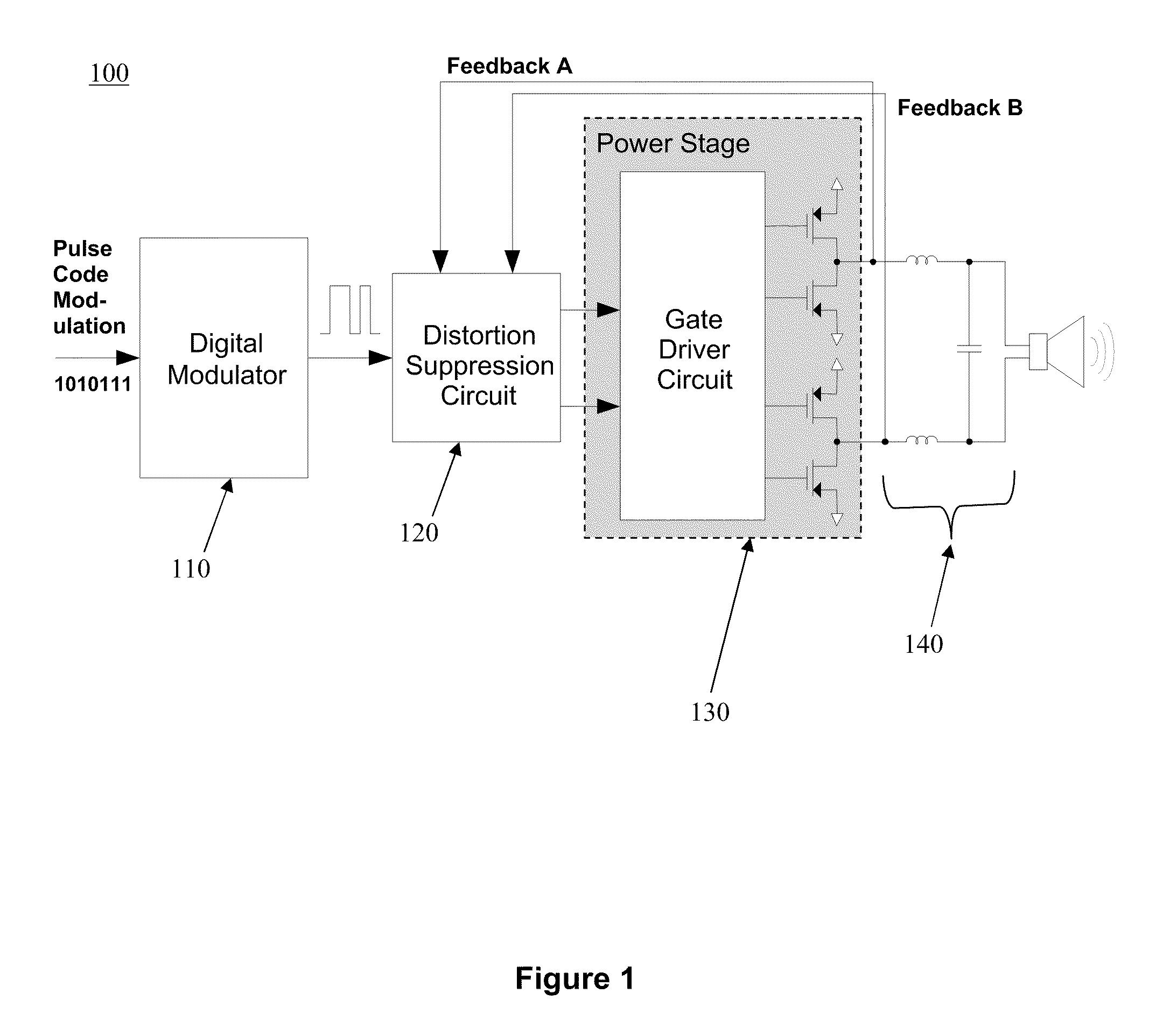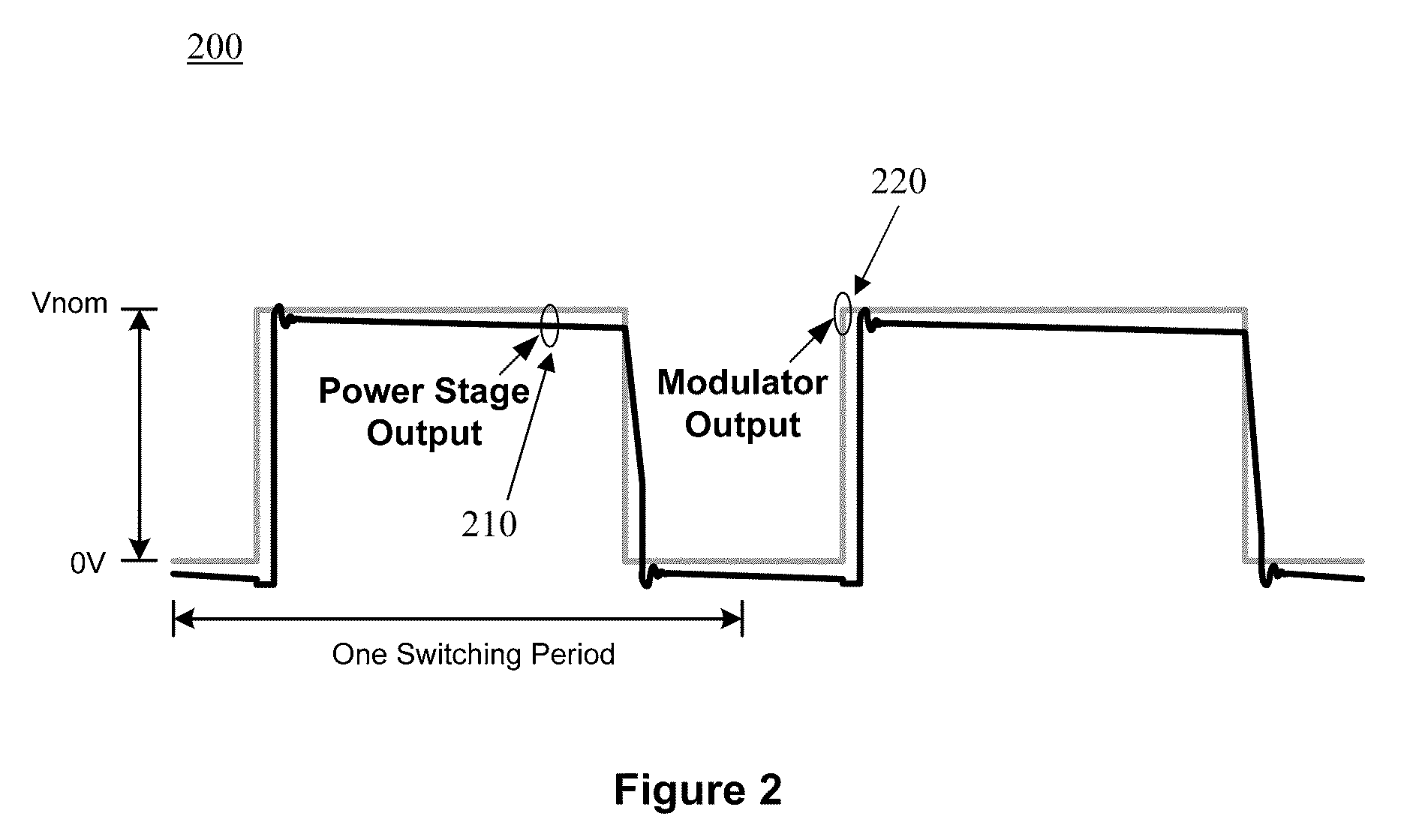Distortion suppression circuit for digital class-d audio amplifier
a technology of distortion suppression circuit and audio amplifier, which is applied in the direction of amplifiers, dc amplifiers with modulator-demodulator, semiconductor devices/discharge tubes, etc., can solve the problems of difficult practical design, high cost, and difficulty in obtaining power supplies, so as to achieve low distortion and low cost , the effect of high reliability
- Summary
- Abstract
- Description
- Claims
- Application Information
AI Technical Summary
Benefits of technology
Problems solved by technology
Method used
Image
Examples
Embodiment Construction
[0025]FIG. 1 is a top level block diagram 100 of a digital Class-D audio amplifier portraying an embodiment of the subject feedback circuit. The components to this design comprise: digital modulator 110, distortion suppression circuit 120, and power stage 130. The digital modulator 110 converts audio signals into Pulse-Width Modulated (PWM) pulses that are used to drive the power stage 130. The distortion suppression circuit 120 ensures that the power stage output resembles the digital modulator output as closely as possible using feedback, and the power stage 130 performs the high power audio amplification. FIG. 1 also shows the power stage output filtered by an inductor-capacitor (LC) filter 140 before reaching the speaker.
[0026]In digital Class-D audio amplifiers, distortion is predominantly caused by power stage non-ideality and voltage variation / noise on the power source supplying the power stage. In this invention, the distortion introduced by the power stage is suppressed by ...
PUM
 Login to View More
Login to View More Abstract
Description
Claims
Application Information
 Login to View More
Login to View More - R&D
- Intellectual Property
- Life Sciences
- Materials
- Tech Scout
- Unparalleled Data Quality
- Higher Quality Content
- 60% Fewer Hallucinations
Browse by: Latest US Patents, China's latest patents, Technical Efficacy Thesaurus, Application Domain, Technology Topic, Popular Technical Reports.
© 2025 PatSnap. All rights reserved.Legal|Privacy policy|Modern Slavery Act Transparency Statement|Sitemap|About US| Contact US: help@patsnap.com



